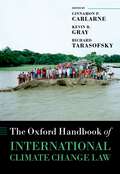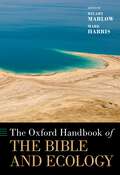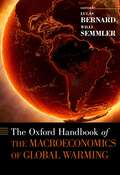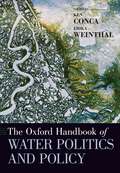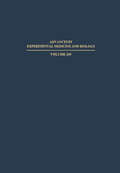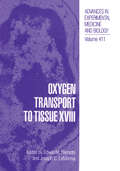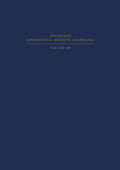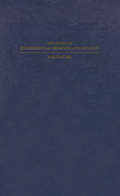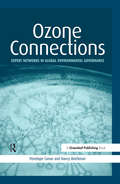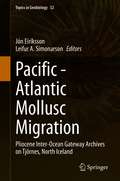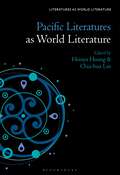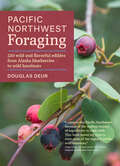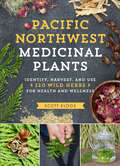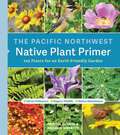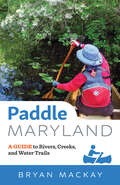- Table View
- List View
The Oxford Handbook of International Climate Change Law (Oxford Handbooks)
Climate change presents one of the greatest challenges of our time, and has become one of the defining issues of the twenty-first century. The radical changes which both developed and developing countries will need to make, in economic and in legal terms, to respond to climate change are unprecedented. International law, including treaty regimes, institutions, and customary international law, needs to address the myriad challenges and consequences of climate change, including variations in the weather patterns, sea level rise, and the resulting migration of peoples. The Oxford Handbook of International Climate Change Law provides an unprecedented and authoritative overview of all aspects of international climate change law as it currently stands, with guidance for how it should develop in the future. Over forty leading scholars and practitioners set out a comprehensive understanding of the legal issues that surround this vitally important but still emerging area of international law. This book addresses the major legal dimensions of the problems caused by climate change: not only in the content and nature of the international legal frameworks, which need implementation at the national level, but also the development of carbon trading systems as a means of reducing the costs of meeting emission reduction targets. After an introduction to the field, the Handbook assesses the relevant institutions, the key applicable principles of international law, the international mitigation regime and its consequences, and climate change litigation, before providing perspectives focused upon specific countries or regions. The Handbook will be an invaluable resource for scholars, students, and practitioners of international climate change law. It provides readers with diverse perspectives, bringing together interpretations from different disciplines, countries, and cultures.
The Oxford Handbook of the Bible and Ecology (Oxford Handbooks)
by Hilary Marlow and Mark HarrisEnvironmental issues are an ever-increasing focus of public discourse and have proved concerning to religious groups as well as society more widely. Among biblical scholars, criticism of the Judeo-Christian tradition for its part in the worsening crisis has led to a small but growing field of study on ecology and the Bible. This volume in the Oxford Handbook series makes a significant contribution to this burgeoning interest in ecological hermeneutics, incorporating the best of international scholarship on ecology and the Bible. The Handbook comprises 30 individual essays on a wide range of relevant topics by established and emerging scholars. Arranged in four sections, the volume begins with a historical overview before tackling some key methodological issues. The second, substantial, section comprises thirteen essays offering detailed exegesis from an ecological perspective of selected biblical books. This is followed by a section exploring broader thematic topics such as the Imago Dei and stewardship. Finally, the volume concludes with a number of essays on contemporary perspectives and applications, including political and ethical considerations. The editors Hilary Marlow and Mark Harris have drawn on their experience in Hebrew Bible and New Testament respectively to bring together a diverse and engaging collection of essays on a subject of immense relevance. Its accessible style, comprehensive scope, and range of material means that the volume is a valuable resource, not only to students and scholars of the Bible but also to religious leaders and practitioners.
The Oxford Handbook of the Bible and Ecology (Oxford Handbooks)
Environmental issues are an ever-increasing focus of public discourse and have proved concerning to religious groups as well as society more widely. Among biblical scholars, criticism of the Judeo-Christian tradition for its part in the worsening crisis has led to a small but growing field of study on ecology and the Bible. This volume in the Oxford Handbook series makes a significant contribution to this burgeoning interest in ecological hermeneutics, incorporating the best of international scholarship on ecology and the Bible. The Handbook comprises 30 individual essays on a wide range of relevant topics by established and emerging scholars. Arranged in four sections, the volume begins with a historical overview before tackling some key methodological issues. The second, substantial, section comprises thirteen essays offering detailed exegesis from an ecological perspective of selected biblical books. This is followed by a section exploring broader thematic topics such as the Imago Dei and stewardship. Finally, the volume concludes with a number of essays on contemporary perspectives and applications, including political and ethical considerations. The editors Hilary Marlow and Mark Harris have drawn on their experience in Hebrew Bible and New Testament respectively to bring together a diverse and engaging collection of essays on a subject of immense relevance. Its accessible style, comprehensive scope, and range of material means that the volume is a valuable resource, not only to students and scholars of the Bible but also to religious leaders and practitioners.
The Oxford Handbook of the Macroeconomics of Global Warming (Oxford Handbooks)
by Lucas Bernard and Willi SemmlerThe first World Climate Conference, which was sponsored by the World Meteorological Organization in Genève in 1979, triggered an international dialogue on global warming. From the 1997 United Nations-sponsored conference-during which the Kyoto Protocol was signed-through meetings in Copenhagen, Cancún, Durban, and most recently Doha (2012) and Warsaw (2013), worldwide attention to the issue of global warming and its impact on the world's economy has rapidly increased in intensity. The consensus of these debates and discussions, however, is less than clear. Optimistically, many geoscience researchers and members of the Intergovernmental Panel on Climate Change (IPCC) have supported CO2 emission reduction pledges while maintaining that a 2°C limit in increased temperature by the year 2100 is achievable through international coordination. Other observers postulate that established CO2 reduction commitments such as those agreed to at the Copenhagen United Nations Climate Change Conference (2009) are insufficient and cannot hold the global warming increase below 2°C. As experts theorize on precisely what impact global warming will have, developing nations have become particularly alarmed. The developed world will use energy to mitigate global warming effects, but developing countries are more exposed by geography and poverty to the most dangerous consequences of a global temperature rise and lack the economic means to adapt. The complex dynamics that result from this confluence of science and geopolitics gives rise to even more complicated issues for economists, financial planners, business leaders, and policy-makers. The Oxford Handbook of the Macroeconomics of Global Warming analyzes the economic impact of issues related to and resulting from global warming, specifically the implications of possible preventative measures, various policy changes, and adaptation efforts as well as the different consequences climate change will have on both developing and developed nations. This multi-disciplinary approach, which touches on issues of growth, employment, and development, elucidates for readers state-of-the-art research on the complex and far-reaching problem of global warming.
The Oxford Handbook of the Macroeconomics of Global Warming (Oxford Handbooks)
by Willi Semmler Lucas BernardThe first World Climate Conference, which was sponsored by the World Meteorological Organization in Genève in 1979, triggered an international dialogue on global warming. From the 1997 United Nations-sponsored conference-during which the Kyoto Protocol was signed-through meetings in Copenhagen, Cancún, Durban, and most recently Doha (2012) and Warsaw (2013), worldwide attention to the issue of global warming and its impact on the world's economy has rapidly increased in intensity. The consensus of these debates and discussions, however, is less than clear. Optimistically, many geoscience researchers and members of the Intergovernmental Panel on Climate Change (IPCC) have supported CO2 emission reduction pledges while maintaining that a 2°C limit in increased temperature by the year 2100 is achievable through international coordination. Other observers postulate that established CO2 reduction commitments such as those agreed to at the Copenhagen United Nations Climate Change Conference (2009) are insufficient and cannot hold the global warming increase below 2°C. As experts theorize on precisely what impact global warming will have, developing nations have become particularly alarmed. The developed world will use energy to mitigate global warming effects, but developing countries are more exposed by geography and poverty to the most dangerous consequences of a global temperature rise and lack the economic means to adapt. The complex dynamics that result from this confluence of science and geopolitics gives rise to even more complicated issues for economists, financial planners, business leaders, and policy-makers. The Oxford Handbook of the Macroeconomics of Global Warming analyzes the economic impact of issues related to and resulting from global warming, specifically the implications of possible preventative measures, various policy changes, and adaptation efforts as well as the different consequences climate change will have on both developing and developed nations. This multi-disciplinary approach, which touches on issues of growth, employment, and development, elucidates for readers state-of-the-art research on the complex and far-reaching problem of global warming.
The Oxford Handbook of Water Politics and Policy (Oxford Handbooks)
Water is a basic human need and a scarce commodity with increasing value to farmers, industries, and cities in an urbanizing world. It is unpredictable in supply and quality, difficult to contain or direct, and notoriously difficult to manage well. Several trends -- climate change, the endurance of widespread global water poverty, intensifying competition among rival uses and users, and the vulnerability of critical freshwater ecosystems -- combine to intensify the challenges of governing water wisely, fairly, and efficiently. The twenty-seven chapters in The Oxford Handbook of Water Politics and Policy address such issues over the course of seven thematic sections. These themes reflect familiar frameworks in the water policy world, including water, poverty, and health; water and nature; and water equity and justice. Other sections look at emergent and contentious policy arenas, including the water/energy/food nexus and management of uncertainty in water supply, or connect well-established strands in new ways, including sections on water tools (water price and value, supply and demand, privatization, corporate responsibility) and issues surrounding transboundary waters. This volume conceives of water as a global issue, and gathers a diverse group of leading scholars of water politics and policy.
Oxygen Transport to Tissue-V (Advances in Experimental Medicine and Biology #169)
by D. W. LubbersOn the understanding that few people ever read the preface to any book and also on the understanding that even those few people who do read the preface realize that virtually nothing of any substance is ever said, I shall write at such length as will be proportional to my expected readership. The meetings of the International Society on Oxygen Transport to Tissue provide a forum for discussion amongst scientists who, although being from very diverse and specialized backgrounds, have tissue oxygenation as a unifying theme of interest. The wide variety of research material presented in this volume and the multiplicity of the experimental techniques described, should serve as an adequate gauge to the range of expertise and knowledge of the society's members. Such diversity should also stress the importance of the need for multidisciplinary approaches to complex biological problems. In attempting a fundamental characterization of a biological process such as tissue oxygenation, the application of very many separate research skills are necessary, such as mathematics, engi neering, biophysics, biochemistry, physiology, histology and clini cal medicine. The success of the ISOTT has - and we hope - will con tinue to be causing a combination of individuals to direct their specialized knowledge to the many facets of a single proces- tissue oxygenation.
Oxygen Transport to Tissue XVIII (Advances in Experimental Medicine and Biology #411)
by Edwin M. Nemoto Joseph C. LaMannaThe 23rd annual meeting of the International Society on Oxygen Transport to Tissue took place from August 23-27, 1995, at the Station Square Sheraton along the shores of the Monongahela River where it meets with the Allegheny and Ohio Rivers to form the "Point" of the city of Pittsburgh. Pittsburgh was a convenient location for the meeting be ing between both the East and West coasts of the United States and between the Asian and European continents. It is easily accessible by air via its large international airport. In ad dition, Pittsburgh has just recently undergone a transition from the steel mills and indus tries of old to an age of computers and biotechnology as evidenced by the new Biotechnology Center of the University of Pittsburgh where a lunch and tour were pro vided for interested participants. On the tour, the participants got to see the mix of projects ranging from molecular biology to clinical projects studying membrane oxygenators, ven tricular assist devices, oxygen carriers, and more, representing the forefront of research on oxygen delivery systems to tissue.
Oxygen Transport to Tissue—IV (Advances in Experimental Medicine and Biology #159)
by Haim I. BicherThe International Society on OXygen Transport to Tissue (ISO'IT) has canpleted nine years as a society since its first fonnal meeting at Charleston-Clanson, South Carolina, United States of America in 1973. Prior to this time an active group of scientists and engineers rret in w::>rkshop environrrents, on a periodic basis, around the w::>rld. Meetings are ncM on an annual basis, alternating between Europe and the United States. The international gatherings include scientists and engineers in a variety of fields. ISOIT has produced a stable forum for the exchange of info:rmation on the rnicroenvirornnent of living cells, ranging fran the utilization of mathematics and engineering, through physiology and radiobiology, to clinical applications. The proceedings of these meetings have been codified into six books, four of them published by Plenum Press in its prestigious Advances in Experimental Medicine and Biology series. This volume, together with the next two volumes that will follCJV.l the meetings in Dortmund, Gennany in 1982 and in Ruston, Louisiana in 1983 will provide further chapters in the history of this fascinating field of knCJV.lledge. OUr thanks are given to all the participants and contributors to the Detroit meeting. We hope that the strength of the society will grow in caning years, and that our contribution will eventually be felt in :inproving the treatment of the sick, and in enhancing the thought processes of the intellectual.
Oxygen Transport to Tissue—VI (Advances in Experimental Medicine and Biology #180)
by Duane F. BruleyThe theme of the 1983 annual ISOTT meeting emphasizes a dual scientific approach, utilizing interdisciplinary theoretical and experimental methodology, to unravel the secrets of oxygen transport to tissue. ISOTT is leading the way in the development and application of forefront techniques to allow a more basic understanding of this important physiological phenomena. The Society can be proud of its contributions in helping to advance the gross analysis techniques of the past to the synergistic study of tissue micro areas by sophisticated mathematical and experimental means. There is a tremendous need to continue the pursuit of basic knowledge at the regional tissue level and to move rapidly to the examination of fundamental biochemical reactions at the cellular level. To accomplish this, it will be necessary to take advantage of the most powerful computing machinery presently available and to apply state-of-the-art experimental methodology, such as polarographic, autoradiographic and nuclear magnetic resonance techniques in our studies. Our Society must continue to work hard to push back barriers to enhance our understanding of mechanisms that lead to pathology. Hopefully, our efforts will be significant in helping science to overcome the many dreadful diseases that mankind faces in today's world. Duane Bruley Haim Bicher Daniel Reneau v ACKNOWLEDGEMENT We are forever indebted to Connie Staggs and Ellie Topakoglu for their energy and sacrifice in preparing for and managing the 1983 ISOTT meeting.
Ozone Connections: Expert Networks in Global Environmental Governance
by Penelope Canan Nancy ReichmanIt is difficult to think of a more significant example of international cooperation to address a problem that threatened the health and wellbeing of the entire planet than the 1987 Montreal Protocol for the Elimination of Ozone-Depleting Substances. This breakthrough in international environmental governance has proved to be an extraordinary success beyond rhetoric or promises. In a dozen years, this international agreement went from an understanding of the need to act in a precautionary manner for mutual benefit to a successful worldwide effort to eliminate chemical substances harmful to our protective ozone layer. The production and consumption of most ozone-depleting substances has now been phased out in developed countries, with developing countries not far behind. What happened and why is of tremendous importance for those looking for guidance in the future, particularly those now involved in hugely complicated negotiations on climate change. The success of the Montreal Protocol has been linked to many factors such as political will, treaty flexibility and the recognition of equity issues raised by developing countries. While comprehensively analysing all of these success factors, Ozone Connections goes on to suggest that a social organization of global governance as typified by the protocol's Technical and Economic Assessment Panel (TEAP) was a unique – but replicable – decisive factor. The book argues that we need to understand how the implementation of complex global environmental agreements depends on the construction and exploitation of social connections among experts who act collectively to define solutions to environmental problems. This highly original and provoking thesis synthesises some of the more exciting social science concepts and methods, while refining our basic understanding of environmental social change and providing policy-makers with concrete success factors to replicate. This book will be essential reading for academics in the fields of sociology, political science, international relations, network studies, human communication, motivation, collaboration and leadership, as well as the burgeoning interdisciplinary field of environmental studies. Businesses will also find many applications for practical use. Finally, the many directly transferable lessons from ozone layer protection make this book a key addition to the growing literature on climate change.
Ozone Connections: Expert Networks in Global Environmental Governance
by Penelope Canan Nancy ReichmanIt is difficult to think of a more significant example of international cooperation to address a problem that threatened the health and wellbeing of the entire planet than the 1987 Montreal Protocol for the Elimination of Ozone-Depleting Substances. This breakthrough in international environmental governance has proved to be an extraordinary success beyond rhetoric or promises. In a dozen years, this international agreement went from an understanding of the need to act in a precautionary manner for mutual benefit to a successful worldwide effort to eliminate chemical substances harmful to our protective ozone layer. The production and consumption of most ozone-depleting substances has now been phased out in developed countries, with developing countries not far behind. What happened and why is of tremendous importance for those looking for guidance in the future, particularly those now involved in hugely complicated negotiations on climate change. The success of the Montreal Protocol has been linked to many factors such as political will, treaty flexibility and the recognition of equity issues raised by developing countries. While comprehensively analysing all of these success factors, Ozone Connections goes on to suggest that a social organization of global governance as typified by the protocol's Technical and Economic Assessment Panel (TEAP) was a unique – but replicable – decisive factor. The book argues that we need to understand how the implementation of complex global environmental agreements depends on the construction and exploitation of social connections among experts who act collectively to define solutions to environmental problems. This highly original and provoking thesis synthesises some of the more exciting social science concepts and methods, while refining our basic understanding of environmental social change and providing policy-makers with concrete success factors to replicate. This book will be essential reading for academics in the fields of sociology, political science, international relations, network studies, human communication, motivation, collaboration and leadership, as well as the burgeoning interdisciplinary field of environmental studies. Businesses will also find many applications for practical use. Finally, the many directly transferable lessons from ozone layer protection make this book a key addition to the growing literature on climate change.
Ozone in the Atmosphere: Basic Principles, Natural and Human Impacts
by Peter Fabian Martin DamerisPeter Fabian and Martin Dameris provide a concise yet comprehensive overview of established scientific knowledge about ozone in the atmosphere. They present both ozone changes and trends in the stratosphere, as well as the effects of overabundance in the troposphere including the phenomenon of photosmog.Aspects such as photochemistry, atmospheric dynamics and global ozone distribution as well as various techniques for ozone measurement are treated. The authors outline the various causes for ozone depletion, the effects of ozone pollution and the relation to climate change.The book provides a handy reference guide for researchers active in atmospheric ozone research and a useful introduction for advanced students specializing in this field. Non-specialists interested in this field will also profit from reading the book.Peter Fabian can look back on a life-long active career in ozone research, having first gained international recognition for his measurements of the global distribution of halogenated hydrocarbons. He also pioneered photosmog investigations in the metropolitan areas of Munich, Berlin, Athens and Santiago de Chile, and his KROFEX facility provided controlled ozone fumigation of adult tree canopies for biologists to investigate the effects of ozone increases on forests. Besides having published a broad range of scientific articles, he has also been the author or editor of numerous books. From 2002 to 2005 he served the European Geosciences Union (EGU) as their first and Founding President.Martin Dameris is a prominent atmospheric modeler whose interests include the impacts of all kinds of natural and man-made disturbances on the atmospheric system. His scientific work focuses on the connections between ozone and climate changes. For many years he has been an active contributor to the WMO scientific ozone depletion assessments, which have been used to monitor the depletion and recovery of the ozone layer in accordance with the Montreal Protocol.
Pabay: An Island Odyssey
by Christopher WhatleyThe tiny diamond-shaped island of Pabay lies in Skye’s Inner Sound, just two and a half miles from the bustling village of Broadford. One of five Hebridean islands of that name, it derives from the Norse papa-ey, meaning ‘island of the priest’. Many visitors since the first holy men built their chapel there have felt that Pabay is a deeply spiritual place, and one of wonder. These include the great 19th-century geologists Hugh Miller and Archibald Geikie, for whom the island’s rocks and fossil-laden shales revealed much about the nature of Creation itself.Len and Margaret Whatley moved to Pabay from the Midlands and lived there from 1950 until 1970. Leaving a landlocked life in Birmingham for the emptiness of an uninhabited island was a brave and challenging move for which nothing could have prepared them. Christopher Whatley, their nephew, was a regular visitor to Pabay whilst they lived there. In this book, based on archival research, oral interviews, memory and personal experience, he explores the history of this tiny island jewel, and the people for whom it has been home, to create a vivid picture of the trials, tribulations and joys of island life.
Pacific - Atlantic Mollusc Migration: Pliocene Inter-Ocean Gateway Archives on Tjörnes, North Iceland (Topics in Geobiology #52)
by Jón Eiríksson Leifur A. SímonarsonThis volume sheds new light on the marine fauna and geological setting of the Tjörnes Sequence, North Iceland, which is a classic site for the Pliocene and Pleistocene stratigraphy of the North Atlantic region. Readers will discover descriptions of new data collected by the editors over a period of over three decades on marine faunal assemblages and sedimentology available for palaeoenvironmental reconstructions, as well as the tectonic and stratigraphical relationships on Tjörnes Peninsula. The book includes a comprehensive account of all the collections of marine fossil invertebrate macrofossils and foraminifera known to the editors from the Tjörnes Sequence. It is expected to elucidate sedimentological and faunal changes from relatively stable Pliocene conditions to highly variable and periodically harsh climatic conditions of recurring Quaternary glaciations. The distribution, recent or fossil, of various species is recorded and pertinent ecological and biological features are also discussed. The Tjörnes Sequence records the Neogene migration of Pacific species into the North Atlantic. Researchers in geology, climate science, environmental science and earth science will find this book particularly valuable.
Pacific Literatures as World Literature (Literatures as World Literature)
by Hsinya Huang and Chia-hua LinPacific Literatures as World Literature is a conjuration of trans-Pacific poets and writers whose work enacts forces of “becoming oceanic” and suggests a different mode of understanding, viewing, and belonging to the world. The Pacific, past and present, remains uneasily amenable to territorial demarcations of national or marine sovereignty. At the same time, as a planetary element necessary to sustaining life and well-being, the Pacific could become the means to envisioning ecological solidarity, if compellingly framed in terms that elicit consent and inspire an imagination of co-belonging and care. The Pacific can signify a bioregional site of coalitional promise as much as a danger zone of antagonistic peril. With ground-breaking writings from authors based in North America, Japan, Taiwan, Korea, Hawaii, and Guam and new modes of research – including multispecies ethnography and practice, ecopoetics, and indigenous cosmopolitics – authors explore the socio-political significance of the Pacific and contribute to the development of a collective effort of comparative Pacific studies covering a refreshingly broad, ethnographically grounded range of research themes. This volume aims to decenter continental/land poetics as such via long-standing transnational Pacific ties, re-worlding Pacific literature as world literature.
Pacific Literatures as World Literature (Literatures as World Literature)
Pacific Literatures as World Literature is a conjuration of trans-Pacific poets and writers whose work enacts forces of “becoming oceanic” and suggests a different mode of understanding, viewing, and belonging to the world. The Pacific, past and present, remains uneasily amenable to territorial demarcations of national or marine sovereignty. At the same time, as a planetary element necessary to sustaining life and well-being, the Pacific could become the means to envisioning ecological solidarity, if compellingly framed in terms that elicit consent and inspire an imagination of co-belonging and care. The Pacific can signify a bioregional site of coalitional promise as much as a danger zone of antagonistic peril. With ground-breaking writings from authors based in North America, Japan, Taiwan, Korea, Hawaii, and Guam and new modes of research – including multispecies ethnography and practice, ecopoetics, and indigenous cosmopolitics – authors explore the socio-political significance of the Pacific and contribute to the development of a collective effort of comparative Pacific studies covering a refreshingly broad, ethnographically grounded range of research themes. This volume aims to decenter continental/land poetics as such via long-standing transnational Pacific ties, re-worlding Pacific literature as world literature.
Pacific Northwest Foraging: 120 Wild and Flavorful Edibles from Alaska Blueberries to Wild Hazelnuts (Regional Foraging Series)
by Douglas Deur&“Doug Deur invites us to discover the taste and history of the Northwest.&” —Spencer B. Beebe, author of Cache and founder of Ecotrust The Pacific Northwest offers a veritable feast for foragers, and with Douglas Deur as your trusted guide you will learn how to safely find and identify an abundance of delicious wild plants. The plant profiles in Pacific Northwest Foraging include clear, color photographs, identification tips, guidance on how to ethically harvest, and suggestions for eating and preserving. A handy seasonal planner details which plants are available during every season. Thorough, comprehensive, and safe, this is a must-have for foragers in Oregon, Washington, and Alaska.
Pacific Northwest Medicinal Plants: Identify, Harvest, and Use 120 Wild Herbs for Health and Wellness
by Scott KloosPacific Northwest Medicinal Plants is an indispensable guide to finding, identifying, and using the wild medicinal plants of Oregon, Washington, Alaska, northern California, and British Columbia.
The Pacific Northwest Native Plant Primer: 225 Plants for an Earth-Friendly Garden
by Kristin Currin Andrew MerrittNative plants bring your garden to life—and life to your garden! Here are the best choices for Oregon and Washington. The benefits of native plants are enormous—they reduce maintenance, require less water, and attract vital, earth-friendly pollinators like birds, butterflies, and bees. Gardeners seeking to add them to their landscape will find no better guide than The Pacific Northwest Native Plant Primer. Packed with proven advice that everyhome gardener can follow, this incomparable sourcebook profiles 225 recommended native wildflowers, grasses and grasslike plants, ferns, shrubs, and trees. With additional introductory information on preparation, planting, maintenance, and climate considerations, it&’s everything you need to know to create a beautiful and beneficial garden. This must-have handbook is for gardeners in Oregon, Washington, and southern British Columbia.
Pacific Salmon & their Ecosystems: Status and Future Options
by Deanna J. Stouder Peter A. Bisson Robert J. NaimanThe symposium "Pacific Salmon and Their Ecosystems: Status and Future Options',' and this book resulted from initial efforts in 1992 by Robert J. Naiman and Deanna J. Stouder to examine the problem of declining Pacific salmon (Oncorhynchus spp.). Our primary goal was to determine informational gaps. As we explored different scientific sources, state, provincial, and federal agencies, as well as non-profit and fishing organizations, we found that the information existed but was not being communicated across institutional and organizational boundaries. At this juncture, we decided to create a steering committee and plan a symposium to bring together researchers, managers, and resource users. The steering committee consisted of members from state and federal agencies, non-profit organizations, and private industry (see Acknowledgments for names and affiliations). In February 1993, we met at the University of Washington in Seattle to begin planning the symposium. The steering committee spent the next four months developing the conceptual framework for the symposium and the subsequent book. Our objectives were to accomplish the following: (1) assess changes in anadromous Pacific Northwest salmonid populations, (2) examine factors responsible for those changes, and (3) identify options available to society to restore Pacific salmon in the Northwest. The symposium on Pacific Salmon was held in Seattle, Washington, January 10-12, 1994. Four hundred and thirty-five people listened to oral presentations and examined more than forty posters over two and a half days. We made a deliberate attempt to draw in speakers and attendees from outside the Pacific Northwest.
Pacific Voices and Climate Change
by Niki J. P. AlsfordThis book provides a comprehensive overview of issues related to climate change in the Pacific and will be an invaluable reference for those working in this important field. Climate change represents humanity’s greatest threat. The vastness of the Pacific means that no two experiences are the same. This edited volume identifies research that highlights the local impact of climate change on the islands and coastlines of the Pacific. The authors use current research to document climate change via contextually informed studies that engages with local cultures, histories, knowledges, and communities. The transdisciplinary nature and the combination of both academic and non-academic writing makes this book an accessible and important contribution to the field.
Package Price Agroecology: The Ecology of Sustainable Food Systems, Third Edition
by Stephen R. GliessmanStephen Gliessman's complementary volumes, Agroecology: The Ecology of Sustainable Food Systems, Third Edition and Field and Laboratory Investigations in Agroecology, Third Edition are now available together for one low price. Completely revised, updated, and reworked, the third edition of Agroecology presents new data, material, case studies, and options, as well as more emphasis on topics such as the values, beliefs, and ethics of sustainable food systems. The new edition of Field and Laboratory Investigations in Agroecology facilitates hands-on, experimental learning that involves close observation, creative interpretation, and constant questioning of findings.
Paddle Maryland: A Guide to Rivers, Creeks, and Water Trails
by Bryan MacKayWith the Chesapeake Bay;¢;‚¬;€?the largest estuary in the United States;¢;‚¬;€?the Potomac, Monocacy, and Patapsco Rivers, and countless streams, creeks, swamps, and marshes, Maryland is an ideal locale for people to take to the water and enjoy the natural beauty of the Free State.In Paddle Maryland, lifelong Marylander and devoted paddler Bryan MacKay presents twenty-two of his favorite canoe and kayak trips. From lazy floats down the Potomac to swamp excursions on the Eastern Shore, each trip has been selected for its incredible scenery and ample opportunities to observe nature. Included are both tidal and nontidal paddling trips, and MacKay, an ecologist, describes the wildlife and vegetation you will encounter along the way. Considering biodiversity, conservation, and climate change, MacKay also discusses what these issues mean for Maryland;€™s waterways and their inhabitants.With its beautiful illustrations and wealth of practical advice and information, this indispensable guide will appeal to all who love to explore the natural wonders of Maryland with a paddle in their hands.Paddle Maryland is a companion guide to Hike Maryland and Cycle Maryland.
Paddle Maryland: A Guide to Rivers, Creeks, and Water Trails
by Bryan MacKayWith the Chesapeake Bay;¢;‚¬;€?the largest estuary in the United States;¢;‚¬;€?the Potomac, Monocacy, and Patapsco Rivers, and countless streams, creeks, swamps, and marshes, Maryland is an ideal locale for people to take to the water and enjoy the natural beauty of the Free State.In Paddle Maryland, lifelong Marylander and devoted paddler Bryan MacKay presents twenty-two of his favorite canoe and kayak trips. From lazy floats down the Potomac to swamp excursions on the Eastern Shore, each trip has been selected for its incredible scenery and ample opportunities to observe nature. Included are both tidal and nontidal paddling trips, and MacKay, an ecologist, describes the wildlife and vegetation you will encounter along the way. Considering biodiversity, conservation, and climate change, MacKay also discusses what these issues mean for Maryland;€™s waterways and their inhabitants.With its beautiful illustrations and wealth of practical advice and information, this indispensable guide will appeal to all who love to explore the natural wonders of Maryland with a paddle in their hands.Paddle Maryland is a companion guide to Hike Maryland and Cycle Maryland.
